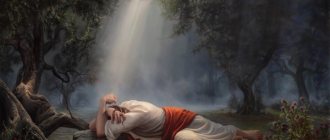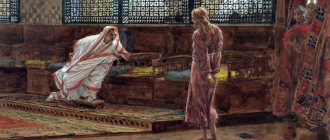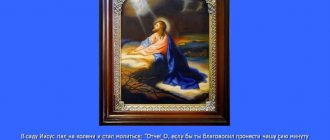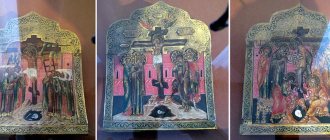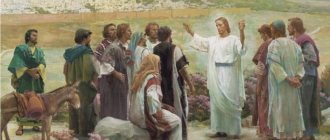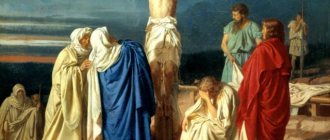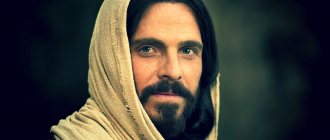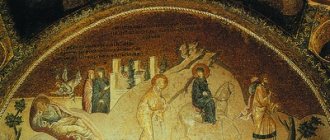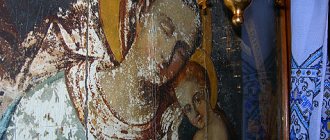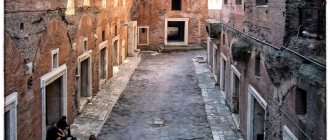Christ in the Garden of Gethsemane (Prayer of the Cup)
Exit after the Last Supper A. A. Ivanov.
1850 26x40. Moscow, State Tretyakov Gallery, Moscow “It’s not long for me to talk to you; For the prince of this world comes and has nothing in Me. But so that the world may know that I love the Father, and as the Father commanded Me, so I do: get up, let’s go from here.” Gospel of John
***
Christ and his disciples enter the Garden of Gethsemane. Sketch. N. N. Ge. 1888 Oil on canvas. 65.3x85. State Tretyakov Gallery, Moscow
The exit of Christ with his disciples from the Last Supper into the Garden of Gethsemane. N. N. Ge. 1889 Canvas, oil. 142x192 State Russian Museum, St. Petersburg
***
Christ in the Garden of Gethsemane. A. I. Kuindzhi. 1901 State Russian Museum, St. Petersburg
In 1882, being at the height of a grandiose world triumph, Kuindzhi suddenly went into seclusion and never exhibited again, until his death (and he still had almost thirty years to live). Only once, almost by accident, in the fall of 1901, for two weeks he opened the doors of his studio to a select circle of visitors to show a painting he had been working on for many years - “Christ in the Garden of Gethsemane.”
***
Prayer for the cup. A. L. Vitberg. Beginning of the 19th century. Canvas, oil. State Museum of the History of Religion
***
Prayer for the cup. Alexey Egorov. 1820s. Oil on canvas. 58x39. State Russian Museum, St. Petersburg Post. from St. Andrew's Cathedral in 1925 No. Ж-3331
***
Prayer for the cup. F. A. Bruni. Mid 1830s. Canvas, oil. 246x134.5 State Russian Museum
Prayer for the cup. F. A. Bruni. 1834–1836 Canvas, oil. 246x134.5 State Tretyakov Gallery
***
Prayer for the cup. S. A. Zhivago. 1845–46 Canvas, oil. The painting that completes the composition of the third tier of the main iconostasis of St. Isaac's Cathedral is located in the central part above the arch of the main altar. Built on the contrasts of a bright beam of light in the upper left part and a darkened right
***
Christ in the Garden of Gethsemane. (Appearance of an Angel) A. A. Ivanov. 1850 26x40. State Tretyakov Gallery, Moscow
...and, kneeling down, he prayed, saying: Father! Oh, that You would deign to carry this cup past Me! however, not My will, but Yours be done. An angel appeared to Him from heaven and strengthened Him. Gospel of Luke
Christ in the Garden of Gethsemane (Prayer for the Cup). A. A. Ivanov. 1840-1857 State Tretyakov Gallery, Moscow
***
Prayer for the cup. I. E. Repin. Early 1860s. Wood, oil. 29.2x21.2 State Tretyakov Gallery
***
Christ in the Garden of Gethsemane. V. G. Perov. 1878 Canvas. Oil. 151.5x238. State Tretyakov Gallery. Moscow
Christ in the Garden of Gethsemane. Vasily Grigorievich Perov. Oil on canvas, 30, 5x53, 5 Ulyanovsk
***
In the Garden of Gethsemane. N. N. Ge. 1869–1880 Oil on canvas, 258x198.5. State Tretyakov Gallery
In the Garden of Gethsemane. N. N. Ge
***
Prayer for the cup. Nikolai Shakhovskoy. 1883-1907 72.5x51.5. Sketch for the mosaic of the Church of the Savior on Spilled Blood. State Russian Museum, St. Petersburg
Prayer for the cup. Hood. N. P. Shakhovskaya. Mosaic of the Church of the Resurrection of Christ (Savior on Spilled Blood), St. Petersburg Source: blog rusmosaic.wordpress.com
***
Christ in the Garden of Gethsemane. M. A. Vrubel. 1887–1888 Paper on cardboard, charcoal. 140.5x52.5. State Tretyakov Gallery, Moscow
***
Christ in the Garden of Gethsemane (Prayer for the Cup). Koshelev Nikolai Andreevich. Con. XIX century Sketch. Oil on paper, 31x16.8. State Museum of the History of Religion, St. Petersburg Sunday afternoon
Prayer for the Cup (“An angel from heaven appeared to Him and strengthened Him”). ON THE. Koshelev. End of the 19th century Cardboard, oil. 40.4×26.4/ State Museum of the History of Religion, St. Petersburg Sunday afternoon
***
Prayer for the cup. BE Makovsky. 1895 (?). Metal, oil. 64.5x47. Sketch for the Cathedral of the Transfiguration in Sumy. Gift to the Trinity-Sergius Lavra October 14, 1964 Trinity-Sergius Lavra, church and archaeological office Signed at the bottom right with a brush in dark brown pigment: “V. Makovsksh 189(5) (?)”, the date is probably covered by a frame.
The presented composition is a sketch for the pictorial image “Prayer for the Cup”. The visual interpretation of the plot is close to the tradition of Russian realistic painting of the Itinerants, who abandoned the academic interpretation of religious motifs. Christ kneels on the edge of the Garden of Gethsemane by the stones (“And He Himself departed from them to cast a stone, and kneeled down and prayed,” Luke 22:41). His face is turned to the sky, his head is overshadowed by a light glow in the shape of a halo, his hands are stretched out in front of him, palms up - Christ asks the Father, whose presence seems to mark a faint gap in the night sky at the top left. In general, the image of the Savior is resolved very dramatically. Makovsky repeatedly turned to religious subjects in his work. In the 1870s, the artist participated in the painting of the Cathedral of Christ the Savior in Moscow, and in 1894 he worked on the decoration of the Cathedral of Christ the Savior in Borki (near Kharkov) at the site of the Alexander III train crash. Among the icons he executed is the “Prayer for the Chalice” (in the altar). This composition was also performed by the artist for the Cathedral of the Transfiguration in Sumy. K. Nikolaev. Gallery on Karpovka
***
Christ in the Garden of Gethsemane. V. D. Polenov. 1890-1900s. Canvas (duplicated), oil. 67.5x98.5.
Signed at the bottom right in a dark pigment with a brush: “VPolenov” (the letters “V” and “P” are intertwined), the date is possibly covered by a frame. The canvas is duplicated and printed on a new stretcher. On the back of the canvas with brush No. 702. Minor abrasions of the paint layer are noted on the right side of the image.
Christ in the Garden of Gethsemane. Fragment of V.P. Polenov
The painting belongs to Polenov’s gospel series “From the Life of Christ” (1890-1900s). As with most of the works in this series, the image of Christ in the Garden of Gethsemane differs from the traditional interpretation of the motif known from the plot of the “Prayer of the Cup.” Christ, offering prayer under the shade of an old thick olive tree in the Garden of Gethsemane, is depicted kneeling, looking up at the sky and raising his right hand to his face and his left hand to his chest. On the right in the distance there is a view of the fortress walls of Jerusalem with the road leading to it. The general mood of the picture is, as it were, dictated by the words from the Gospel: “My soul is sorrowful” (Matthew 26:38; Mark 14:34). These gospel words were chosen by Polenov for the title of the painting, under which one of the options was exhibited at the exhibition “From the Life of Christ” in 1909-1910. The author's repetitions of this plot are known: the work entitled “My Soul is Sorrowful” is mentioned in the collection of Charles Crane, USA. (K. Nikolaev. Gallery on Karpovka)
My soul is sad. V. D. Polenov. Exhibition 1909–1910 Mentioned in the collection of Charles Crane, USA
***
Prayer for the cup. M. V. Nesterov. 1898 Paper on cardboard, graphite pencil, gouache, tempera, bronze 34x27.5. Sketch of the painting of the southern wall of the Church of St. Prince Alexander Nevsky in Abastumani. State Russian Museum, St. Petersburg
***
Prayer for the cup. E. Sorokin. 1904
***
Prayer for the cup. I.K. Aivazovsky. 1897 Oil on canvas, 94×72. Feodosia Art Gallery named after. I.K. Aivazovsky
Compositionally and with the help of light, Christ is highlighted in the “Prayer for the Cup.” At the bottom left are sleeping disciples, at the top are warriors and Jewish ministers with lanterns and weapons. The canvas was created for the Church of St. Sergius. In 1897, the church was restored by its future rector, Haren Vardapet. Aivazovsky reported: “... one of these days there will be consecration, and on this occasion he painted the image of the Savior praying in the Garden of Gethsemane.” Crimean Art Gallery
***
Prayer for the cup. Unknown author. Until the 20th century
***
Prayer for the cup Wilhelm Alexandrovich Kotarbinsky (1849-1922). 1885–1896 Fresco Vladimir Cathedral, Kyiv
V. A. Kotarbinsky, a Pole by birth, who received a classical art education in Italy, lived on his estate near Minsk, met Russian artists in Italy - the Svedomsky brothers, and with their help he learned the Russian language. They invited him to paint the Vladimir Cathedral in Kyiv. Kotarbinsky worked in tandem with Pavel Svedomsky, their tandem turned out to be so successful that it is sometimes difficult to distinguish their authorship, since Kotarbinsky did not sign his works. Together they created 18 huge paintings and 84 individual figures. Working on the paintings of the cathedral for 8 years, Kotarbinsky created beautiful frescoes, stunning in their beauty. In 1905, the Imperial Academy of Arts awarded him the title of academician “for fame in the artistic field.” The only one of the creators of the Vladimir Cathedral died and was buried in Kyiv.
Prayer for the cup. V. A. Kotarbinsky. Second half of the 1880s - first half of the 1890s. Canvas, oil.
***
Prayer for the cup. Vasily Petrovich Vereshchagin. 1875–1880 Cathedral of Christ the Savior, Moscow
“Prayer for the Cup”, “Behold the Man”, “Carrying the Cross”, “Crucifixion”, “Descent from the Cross”, “Entombment” - all these six original paintings made by the artist V.P. Vereshchagin for the Cathedral of Christ the Savior in Moscow, miraculously survived and now have again taken their place in the altar, becoming a shrine of the revived temple.
***
Prayer for the cup. Mosaic based on a sketch by V. M. Vasnetsov Church of the Savior on the Waters, St. Petersburg
Civil engineer S.N. Smirnov approached V.M. Vasnetsov with a request to work on the mosaics of the temple. The artist provided his sketches, and his daughter Tatyana created the original mosaics. Three plots: “Carrying the Cross”, “Prayer for the Chalice” and “The Savior Not Made by Hands”. The first two mosaics were placed on pillars inside the temple. “Spas” was installed above the belfry gates. Apparently, they were late with the Vasnetsov mosaics and were placed in the prepared places after the consecration of the temple (May 15, 1910). It is difficult to talk about the actual cost of the masterpieces, but according to the estimate of the temple, only two Vasnetsov mosaics cost 3,500 “Nikolaev” rubles. For comparison: the bridge across the New Admiralty Canal cost the temple builders a whole thousand less. Spas-on-water
Oil press location
Just as everything created in the world testifies to us about the Savior, so the Garden of Gethsemane - where the olive oil was pressed - bears quiet testimony about that terrible night. Olive oil was very important in the life of the people of Israel. Thanks to the olive oil used in the lamps, it was possible to light a light on a dark night. Olive oil served as a healing balm for wounds, and olive pulp was used as fuel. But the only way to obtain olive oil was to subject the olives to great pressure by crushing them in a stone press. Under this weight, the olives, although initially bitter, produced oil that tasted sweet.
So it is with the Atonement. From the bitterness of that night came something precious and sweet - something that gives light in the night. When we are anointed with blessed oil, Healing comes to us through the sacrifice of Christ, who had to endure the pressure of the press to give us a healing balm for our wounds.
Jesus asked His apostles Peter, James, and John to stay awake, but twice He found them “sleeping for sorrow” (Luke 22:45). He said to them, “Could you not watch with Me for one hour?” Then he added, taking pity on them: “The spirit is willing, but the flesh is weak.” And finally, for the third time, He found them sleeping and said: “Are you still sleeping and resting? behold, the hour has come, and the Son of Man is being delivered into the hands of sinners” (Matthew 26:41-45).
Betrayal
It is possible that already at that very moment He saw the approaching torchlights. These were armed soldiers led by Judas. “He who eats bread with Me has lifted up his heel against Me” (John 13:18).
When Judas approached Jesus, he not only greeted Him, but also “kissed Him” (Matthew 26:49).
In an attempt to prevent Jesus from being arrested, Peter raised his sword and cut off the right ear of Malchus, the priest's servant. However, Jesus, touching his ear, healed him, adding: “Do you think that I cannot now ask My Father, and He will present Me with more than twelve legions of angels?” (Matthew 26:53). For the moment had come when heaven should not interfere, and Jesus should have allowed what was written in the scriptures to be fulfilled.
When the soldiers seized Jesus, “they saw before them a weary, unarmed man, betrayed by one of His closest companions, and whose arrest was painfully and hopelessly watched by a handful of terrified Galileans.” This was the beginning of a long, hard night of interrogation. First, He was taken to the dissolute, greedy Annas, a former high priest who had served for seven years. Being one of the most depraved people on earth, he brought to power and controlled the current high priest, who carried out his every word.
